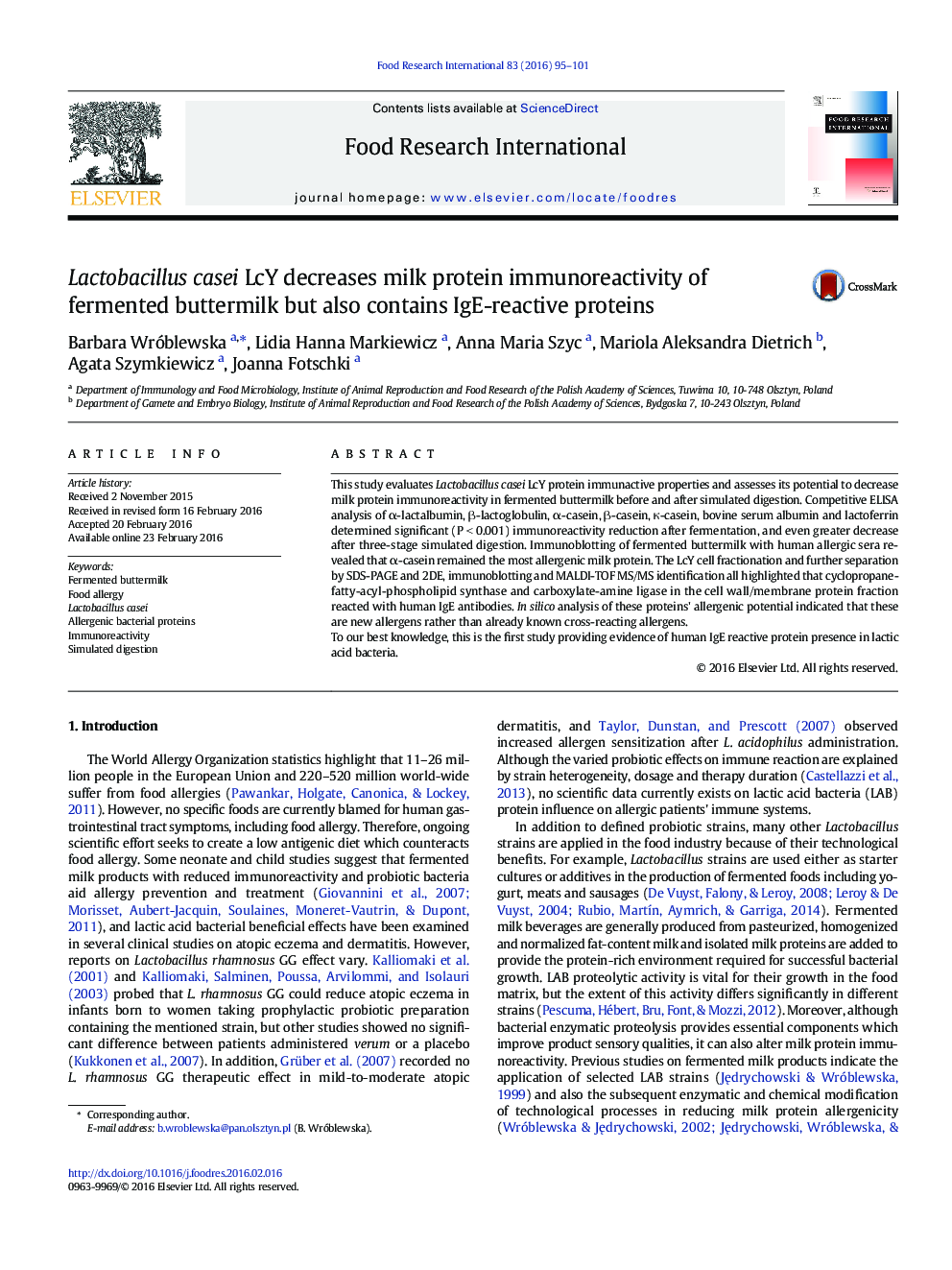| Article ID | Journal | Published Year | Pages | File Type |
|---|---|---|---|---|
| 4561128 | Food Research International | 2016 | 7 Pages |
•Fermentation with L. casei LcY decreased immunoreactivity of sweet buttermilk proteins.•Digestion further reduced the immunoreactivity of fermented buttermilk proteins.•L. casei LcY contains proteins which react with food-allergy patients' serum.•Lactic acid bacteria's allergenic potential requires further study.
This study evaluates Lactobacillus casei LcY protein immunactive properties and assesses its potential to decrease milk protein immunoreactivity in fermented buttermilk before and after simulated digestion. Competitive ELISA analysis of α-lactalbumin, β-lactoglobulin, α-casein, β-casein, κ-casein, bovine serum albumin and lactoferrin determined significant (P < 0.001) immunoreactivity reduction after fermentation, and even greater decrease after three-stage simulated digestion. Immunoblotting of fermented buttermilk with human allergic sera revealed that α-casein remained the most allergenic milk protein. The LcY cell fractionation and further separation by SDS-PAGE and 2DE, immunoblotting and MALDI-TOF MS/MS identification all highlighted that cyclopropane-fatty-acyl-phospholipid synthase and carboxylate-amine ligase in the cell wall/membrane protein fraction reacted with human IgE antibodies. In silico analysis of these proteins' allergenic potential indicated that these are new allergens rather than already known cross-reacting allergens.To our best knowledge, this is the first study providing evidence of human IgE reactive protein presence in lactic acid bacteria.
Graphical abstractFigure optionsDownload full-size imageDownload as PowerPoint slide
